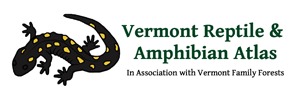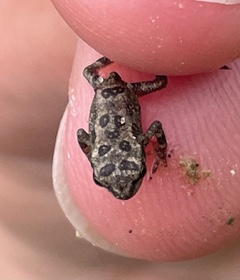
Herp Update: reports of turtles, frogs — June 13, 2022
Current Herp Activity
Herpers, I continue to receive a steady stream of reports of Snapping Turtles, Painted Turtles, and even a couple Northern Map Turtles laying eggs. I also am receiving quite a few reports of Wood Turtles traveling on land, but since they feed on land, those particular individuals may or may not be laying eggs.
Gray Treefrogs have been on the move and calling and depositing eggs and we have even heard a few American Bullfrogs calling. In addition, we have received some reports and photos of Green Frog eggs. I continued to hear some American Toads calling last night as well. All these species lay a film or strings of eggs rather than a rounded mass. This allows each embryo to better obtain dissolved oxygen from the warmer water. Since cold water holds more dissolved oxygen, amphibians that lay their eggs in water in the early spring can get enough oxygen into the center of the solid mass of eggs that they deposit. Unless you lay your eggs in cold northern waters (e.g., Mink Frog) this is not possible at this time of year. Hence the need to lay a thin film, a string, or individual eggs.
American Toad eggs hatch (3-12 days) and develop (40-70) very quickly. How quickly depends on water temperature and food availability. Amazingly, Kate Kelly has found some toads in Hinesburg that have already metamorphosed. Those eggs must have been laid very early this spring. When you develop that quickly you become terrestrial at a very small (and risky) size. I will attach a couple of Kate’s photos.
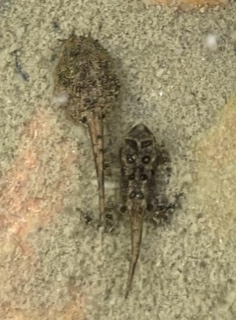

Erin Talmage has been following the development of Spotted Salamander and Wood Frog eggs and larvae in Lincoln. Spotted Salamander eggs laid back in early April are just now hatching. She has sent photos taken on April 10 and June 10 of the same egg mass, so you can see the difference that two months makes. In the same pools, the Wood Frogs hatched well over a month ago and their tadpoles can easily be seen in the ponds now. You can see why Spotted Salamanders require ponds and vernal pools that hold water into mid-July.
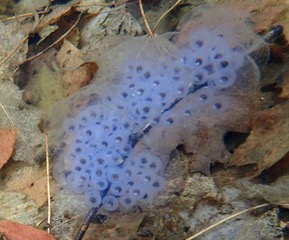
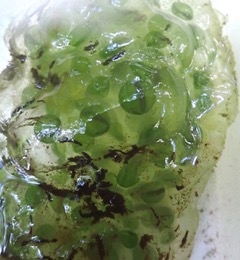
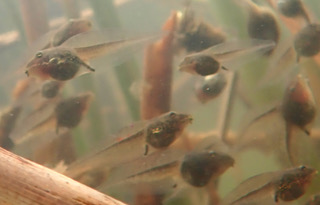
Jim Andrews
